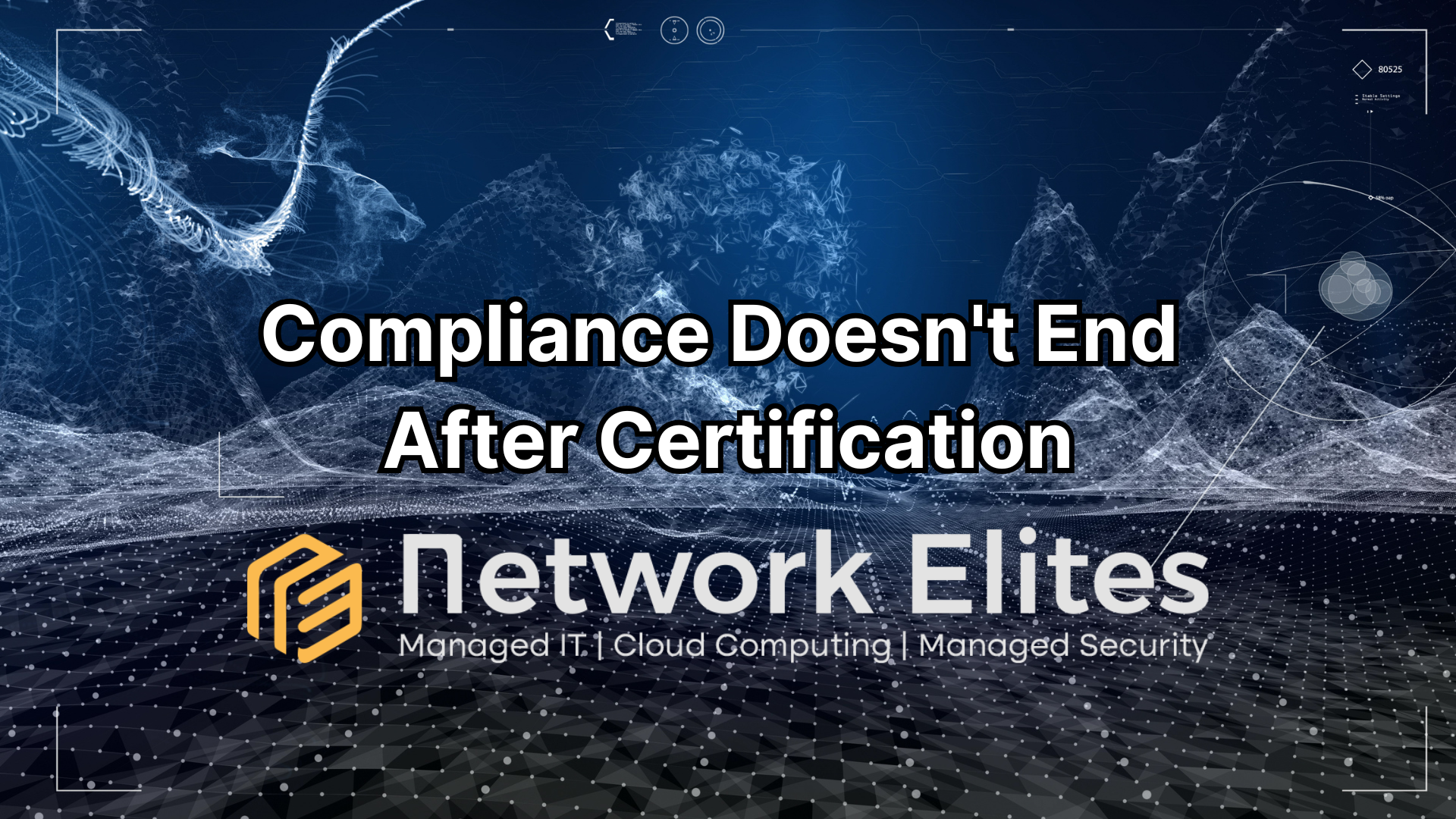Compliance Doesn’t End After Certification: What Ongoing Monitoring Really Looks Like
Achieving certification for regulatory compliance is a significant milestone for any organization. It demonstrates your commitment to meeting industry standards, safeguarding sensitive information, and maintaining the trust of clients, customers, and stakeholders. But here’s the catch: compliance isn’t a “set it and forget it” operation. It’s an ongoing commitment.
Regulatory requirements evolve. New threats and vulnerabilities emerge. Frameworks you once adhered to may require updates or amendments. This is why ongoing monitoring is not only crucial but also the backbone of continuous compliance.
This blog will explore the distinctions between initial compliance and ongoing monitoring, the key elements required for a successful continuous monitoring strategy, and how technology can play a crucial role in staying ahead.
Initial Compliance vs. Ongoing Monitoring
The road to compliance often begins with initial certification. This phase is valuable and necessary, but it’s only the starting point of a much longer journey.
Initial Compliance
Initial compliance covers everything necessary to meet the baseline requirements of a given regulatory framework. Think of certifications like ISO 27001, SOC 2, GDPR, or HIPAA. To obtain these, an organization must:
- Conduct a gap analysis to understand where they fall short.
- Develop policies, practices, and procedures to close compliance gaps.
- Pass an official audit to demonstrate compliance.
While attaining certification is undeniably important, it’s a snapshot in time. That audit represents how compliant you were at the moment it occurred—but it doesn’t account for how compliant you’ll remain in the face of daily operations, new workflows, or emerging security threats.
Ongoing Monitoring
Ongoing monitoring ensures that your organization continues to meet compliance requirements over time. It involves maintaining, auditing, and improving the processes you initially put in place. This starts the moment your certification is in hand and must continue as long as the certification is active.
Key differences include:
- Proactivity over passivity: Initial compliance is reactive to a certification or audit. Ongoing monitoring is about actively staying ahead of potential problems.
- Focus on evolving risks: While initial compliance validates your posture at a specific moment, monitoring accounts for constant changes in technology, risks, and regulations.
- Lifecycle approach: Compliance becomes a standard part of daily operations rather than an occasional checkpoint.
Organizations that fail to prioritize ongoing monitoring are significantly more likely to experience non-compliance issues, regulatory penalties, and reputational damage.
Key Elements of an Effective Ongoing Monitoring Program
Building a robust ongoing monitoring program requires more than just effort; it demands strategy, tools, and collaboration across teams. Below are the foundational pillars of such a program.
1. Risk Management
Ongoing compliance starts with understanding where your greatest risks lie and continuously evaluating vulnerabilities within your operations. A comprehensive risk management process should:
- Perform regular risk assessments based on evolving threats.
- Map risks to applicable regulatory requirements.
- Implement controls to mitigate identified vulnerabilities.
2. Policy Updates and Documentation
Regulatory bodies often update compliance standards annually or as needed to adapt to new developments. Your internal policies need to reflect these changes. An effective ongoing monitoring approach includes:
- Regular reviews and updates to ensure policies align with the latest regulations.
- Documentation of all updates to ensure transparency and accountability during audits.
3. Incident Tracking and Response
Monitoring also involves reacting swiftly to incidents. A compliance-strong organization must:
- Have an incident response plan in place.
- Log, track, and analyze incidents to identify recurring issues.
- Provide reports on incidents and corrective actions during audits.
4. Training and Awareness
Employee training is a linchpin in maintaining compliance. Compliance policies are only as strong as the people implementing them. Key strategies include:
- Providing regular updates on changing regulations to employees.
- Running awareness programs highlighting new risks.
- Offering tailored training sessions for teams handling sensitive data.
5. Audits and Assessments
Schedule and conduct both internal and third-party audits at regular intervals. These evaluations not only help identify lapses but also provide insights that enhance your compliance posture.
Leveraging Technology for Continuous Compliance
Manually managing compliance is not only time-consuming but also prone to error. With increasing digital threats and growing regulatory complexity, leveraging technology is no longer optional.
Compliance Management Software
Compliance platforms like LogicGate, Vanta, or Drata centralize your compliance data, automating many tasks, including tracking changes and generating reports. These tools integrate seamlessly with your existing systems to streamline workflows.
Threat Detection Tools
Tools such as SIEM (Security Information and Event Management) systems can analyze network behavior in real-time to detect suspicious activity. When integrated into a compliance program, they offer the dual benefit of cybersecurity and compliance tracking.
AI & Automation
Artificial intelligence enables organizations to automate repetitive tasks like log analysis, breach reporting, or risk predictions. By eliminating manual oversight, you can focus resources on strategic decisions.
Scalability with Cloud
Cloud platforms like AWS, Google Cloud, and Azure have built-in compliance controls that make it much easier to monitor and adjust your systems. Just as regulations evolve, so do the tools needed to meet compliance standards.
Best Practices for Maintaining Compliance
You don’t just want to achieve compliance. You want to show auditors, clients, and partners that compliance is embedded into the DNA of your organization. Here are practical steps to achieve that:
1. Treat Compliance as a Continuous Process
Embed compliance into your organization’s long-term strategy rather than looking at it as a one-time hurdle.
2. Establish a Dedicated Compliance Team
Create a cross-functional team responsible for compliance across departments. This team should work closely with IT, HR, legal, and risk management to ensure collaboration.
3. Monitor Every Third-Party Vendor
If you rely on contractors or software vendors, ensure they comply with your standards. Non-compliance on their end can impact your organization.
4. Stay Ahead of Regulatory Changes
Subscribe to relevant industry updates from bodies like the National Institute of Standards and Technology (NIST) or other regulators relevant to your industry.
5. Conduct Post-Mortem Analysis
If an incident or non-compliance issue occurs, frame it as an opportunity for improvement. Document what went wrong, the lessons learned, and preventative measures to implement.
Start Monitoring Today for a Secure Future
Achieving compliance is an accomplishment worth celebrating—but staying compliant is where the real work starts. Continuous monitoring ensures compliance doesn’t fall through the cracks due to evolving risks or shifting regulations. By integrating monitoring into daily practices, your organization doesn’t just maintain compliance but thrives in a competitive environment.
The best news? You don’t have to go it alone. Leveraging technology and establishing best practices can simplify the process while ensuring peace of mind.
Want to see how continuous compliance can transform your organization? Contact us today to learn more about our tailored monitoring solutions. Don’t wait until your next audit to take control.








